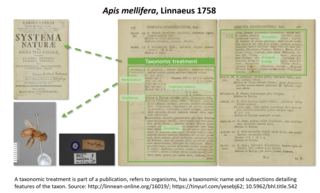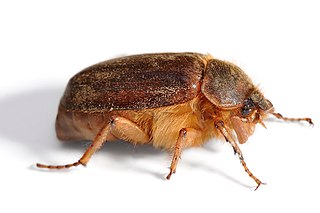
The Hydroscaphidae are a small family of water beetles known commonly as skiff beetles. As of 2010, there are 23 species in the family. Several are recently described.
Yara is a genus of beetles in the family Hydroscaphidae, from South America and Central America. Containing five species:

The acrobatic cavy also known as the Acrobatic Moco and Climbing Cavy is a cavy species native to Brazil. It is found from Goiás state to Tocantins state, west of the Espigão Mestre, Serra Geral de Goiás, and is also found in Terra Ronca State Park.
Nephelomys albigularis, also known as the white-throated oryzomys or Tomes's rice rat, is a species of rodent in the genus Nephelomys of family Cricetidae. Described in 1860, it was the first Nephelomys species to be discovered. It was originally described in the defunct genus Hesperomys as Hesperomys albigularis and considered related to the much smaller H. longicaudatus. By 1894, it was placed in Oryzomys, as Oryzomys albigularis, and associated with what is now Nephelomys meridensis. In the early 1960s, the scope of the species was considerably expanded to include most of the species that are now in Nephelomys, as well as a single name, boliviae, that is currently a synonym of Euryoryzomys nitidus. From 1976 on, several of these were reinstated as separate species.

Nephelomys devius, also known as the Talamancan oryzomys, Boquete rice rat, Chiriqui rice rat, or montane rice rat, is a species of rodent in the genus Nephelomys of family Cricetidae. It is found in cloud forest in the highlands of Costa Rica and western Panama.
Nephelomys levipes, also known as the nimble-footed oryzomys or light-footed rice rat, is a species of rodent in the genus Nephelomys of family Cricetidae. It is found on the eastern slope of the Andes from southeastern Peru into west-central Bolivia in cloud forest at elevations from 1,800 to 3,200 metres. It occurs in the same general area as its congener N. keaysi, but at higher altitudes.
Nephelomys caracolus, also known as the Costa Central oryzomys or caracol rice rat, is a species of rodent in the genus Nephelomys of family Cricetidae. It is found in cloud forest in the Cordillera de la Costa Central of Aragua, Miranda, and the Distrito Federal in north-central Venezuela at elevations from 1000 to 2500 m. It is nocturnal and terrestrial, and has a varied diet. In most Nephelomys species, the posterolateral palatal pits, perforations of the palate near the third molar, are conspicuous and receded into a fossa, but in N. caracolus and the Ecuadorian species N. nimbosus, the pits are much smaller.
Nephelomys meridensis, also known as the Mérida oryzomys, is a species of rodent in the genus Nephelomys of family Cricetidae. It is found in cloud forest in the Sierra Nevada de Mérida of western Venezuela at elevations from 1100 to 4000 m. It is solitary, nocturnal and terrestrial, and has a varied diet.
Plazi is a Swiss-based international non-profit association supporting and promoting the development of persistent and openly accessible digital bio-taxonomic literature. Plazi is cofounder of the Biodiversity Literature Repository and is maintaining this digital taxonomic literature repository at Zenodo to provide access to FAIR data converted from taxonomic publications using the TreatmentBank service, enhances submitted taxonomic treatments by creating a version in the XML format Taxpub, and educates about the importance of maintaining open access to scientific discourse and data. It is a contributor to the evolving e-taxonomy in the field of Biodiversity Informatics.

Nephelomys is a genus of South American oryzomyine rodents found in the Andes from Bolivia to Venezuela, with a westward extension into the mountains of Costa Rica. Its generic name is derived from the Ancient Greek word nephelê "mist", referring to the cloud forest habitat of the members of the genus.
Nephelomys childi is a species of rodent in the genus Nephelomys of family Cricetidae. The type locality is at Bogotá, Colombia, and the type locality of its junior synonym, oconnelli, is at a place known as Buenavista, about 50 miles (80 km) southeast of Bogotá. It was named after Mr. George D. Child, who assisted in obtaining the type series.
Nephelomys maculiventer is a species of rodent in the genus Nephelomys of family Cricetidae. The type locality is in Colombia, at "Sierra El Libano, alt. 6000 ft, Santa Marta District". It was originally described on the basis of 47 specimens, including 34 from Sierra El Libano and 13 from "Valparaiso".
Nephelomys moerex is a species of rodent in the genus Nephelomys of family Cricetidae. The type locality is at Mindo in western Ecuador, where it has been recorded together with three other rodents of the oryzomyine group, Sigmodontomys aphrastus, Mindomys hammondi, and Handleyomys alfaroi, as well as three opossums, Chironectes minimus and unidentified species of Didelphis and Marmosa. Mindo is a "tiny agricultural community" located at 0°02'S, 78°48'W and 1,264 metres (4,150 ft) above sea level. It was originally described by Oldfield Thomas as a subspecies of Oryzomys albigularis. It remained synonymized under this species until it was recognized as a separate species when the genus Nephelomys was established for Oryzomys albigularis and related species in 2006.
Nephelomys nimbosus is a species of rodent in the genus Nephelomys of family Cricetidae. Its type locality is at San Antonio on the northeastern slope of the Tungurahua in the Andes of Ecuador, at an altitude of about 6,700 feet (2,000 m). The type series included five individuals.

Nephelomys pirrensis, also known as the Mount Pirre rice rat, is a species of rodent in the genus Nephelomys of family Cricetidae. Its type locality is at Mount Pirri or Pirre in eastern Panama, at an altitude of 4,500 feet (1,400 m), and it has also been recorded on Mount Tacarcuna.
Nephelomys pectoralis is a species of rodent in the genus Nephelomys of family Cricetidae. Its type locality is 40 miles (64 km) west of the city of Popayán, Cauca Department, Colombia, at an altitude of 10,340 feet (3,150 m). American zoologist Joel Asaph Allen first described it in 1912 on the basis of 112 specimens from several locations in the Cordillera Occidental. He classified it as a species of Oryzomys, Oryzomys pectoralis, but later subsumed into the species Oryzomys albigularis. When that species was transferred to the new genus Nephelomys in 2006, N. pectoralis was recognized as a separate species.

A taxonomic treatment is a section in a scientific publication documenting the features of a related group of organisms or taxa. Treatments have been the building blocks of how data about taxa are provided, ever since the beginning of modern taxonomy by Linnaeus 1753 for plants and 1758 for animals. Each scientifically described taxon has at least one taxonomic treatment. In today’s publishing, a taxonomic treatment tag

Nepenthes candalaga is a tropical pitcher plant endemic to Mt. Candalaga, in the Municipality of Maragusan, Davao de Oro, island of Mindanao, Philippines. This bringing the total number of Nepenthes species in this island to 38, making Mindanao the island with the highest concentration of Nepenthes species in the Philippines. Nepenthes candalaga is closely allied to N. justinae but differs in having a lamina with 2 – 3 longitudinal veins that are parallel with the midrib. Additionally, the orbicular lid of the pitchers, the lid spur tip that is non-bifid, the triangular lid appendage, the short banner-shaped wings below the peristome that covers only a sixth of the trap's anterior eventually becoming ridges towards the trap base, and the absent upper pitcher rim that is widest near the peristome differentiates this species from N. justinae. The species is assessed as Critically endangered due to the threats of deforestation and habitat loss without legislative protection.
The Mozambique long-fingered bat is a species of bat within the family Miniopteridae. Its distribution is in Africa within countries such as Kenya, Namibia, Ethiopia, Zimbabwe, and other countries in East Africa at elevations of 420 to 1800 meters. It is nocturnal and uses uses caves and mines during the day as roosts. The holotype was collected in a mist net that was placed over a swimming pool at the Bamboo Inn, on the outskirts of Nampula, at an altitude of 420 meters. A paratype was also caught shortly afterwards in the same mist net settup. The species name mossambicus stands for the country the type series was collected in, Mozambique.

Anoplognathus olivieri is a species of beetle within the genus Anoplognathus.






